Cornstarch Quicksand
Anyone who has ever watched a classic Western knows about the dangers of quicksand. You know, that gooey stuff that grabs a hold of its […]
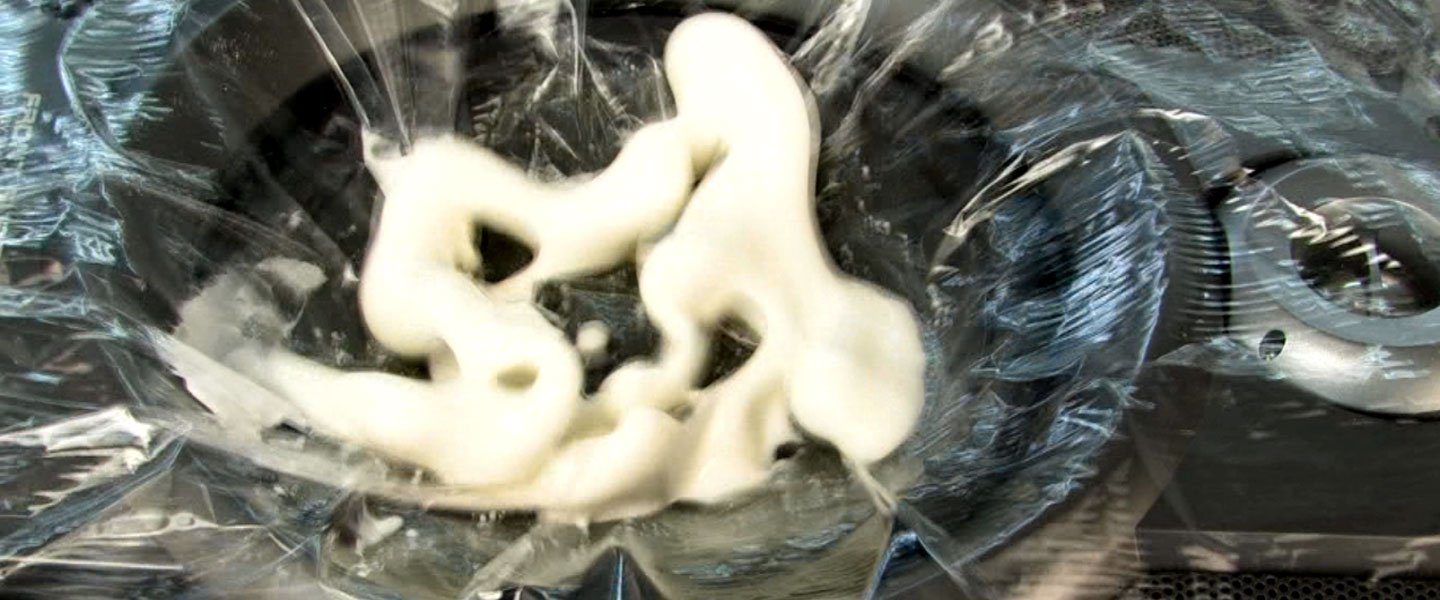
Mixing cornstarch and water creates an ooey, gooey substance that behavior both like a solid and a liquid at the same time. Scientists call this mixture a Non-Newtonian Fluid while kids call it Oobleck. We call it the perfect material to vibrate on a speaker. It’s messy… it’s fun… but most of all it allows you to visualize sound waves as they move through a most peculiar liquid… or is that a solid?
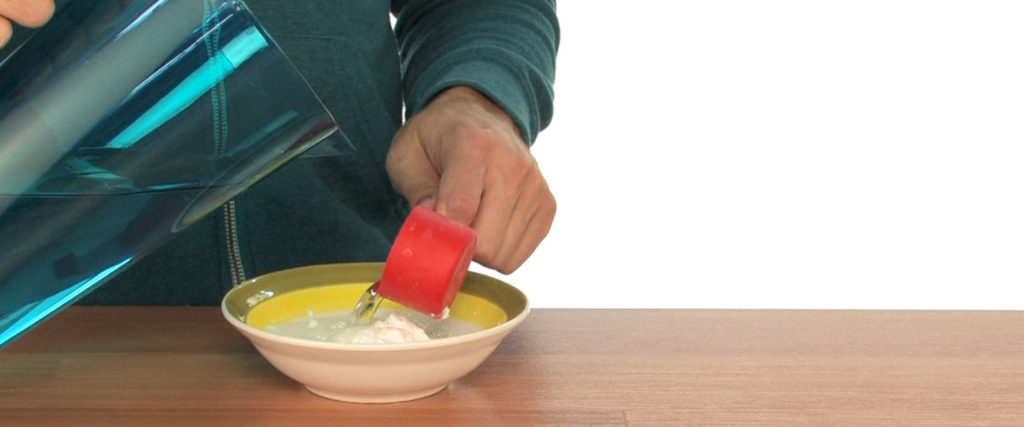
Pour approximately 1/4 cup of cornstarch into the mixing bowl and slowly add about 1/2 cup of water. Stir. Sometimes it is easier to mix the cornstarch and water with your bare hands.
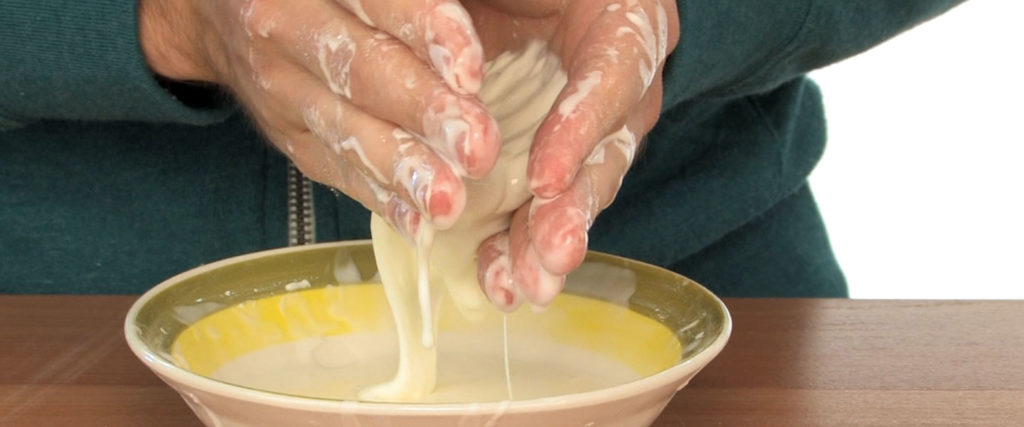
Continue adding cornstarch and water in small amounts until you get a mixture that has the consistency of honey. It may take a little work to get the consistency just right. The mixture gets thicker or more viscous as you add more cornstarch.
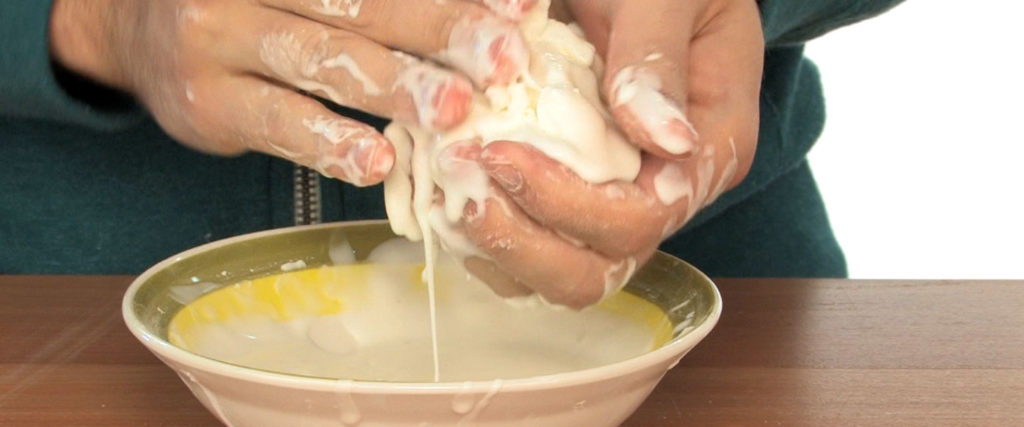
Notice how the substance is neither 100% solid nor 100% liquid – you can roll it into a ball, but the moment you stop rolling it turns back into a dripping liquid.
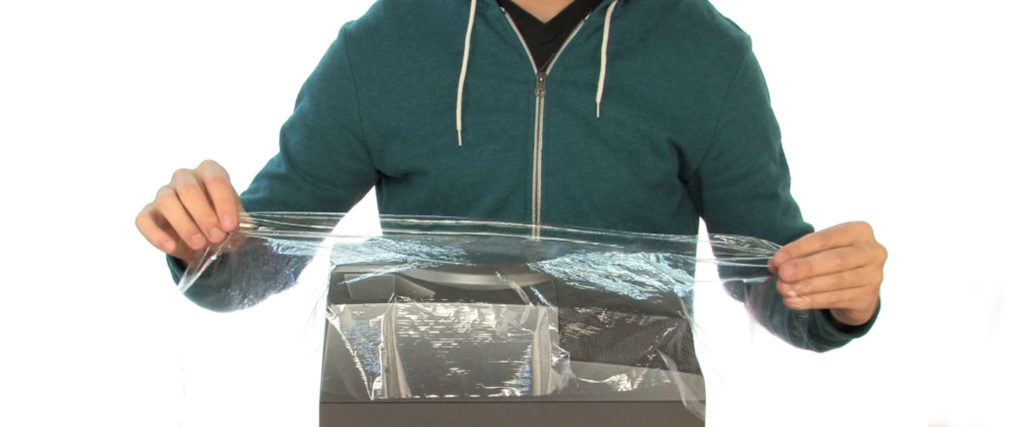
Gently lay your speaker on its back so that the speaker faces upwards. Make sure that your sound system is off.
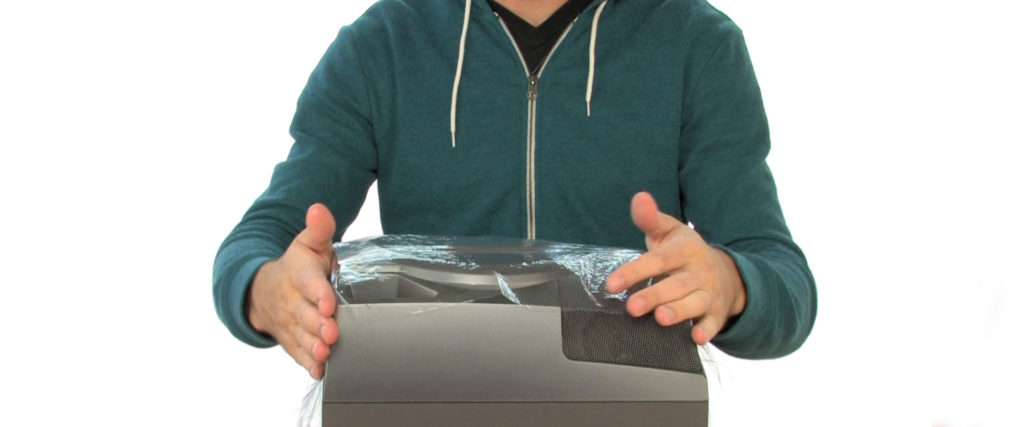
Cover the speaker with thin plastic like a trashbag or plastic wrap.
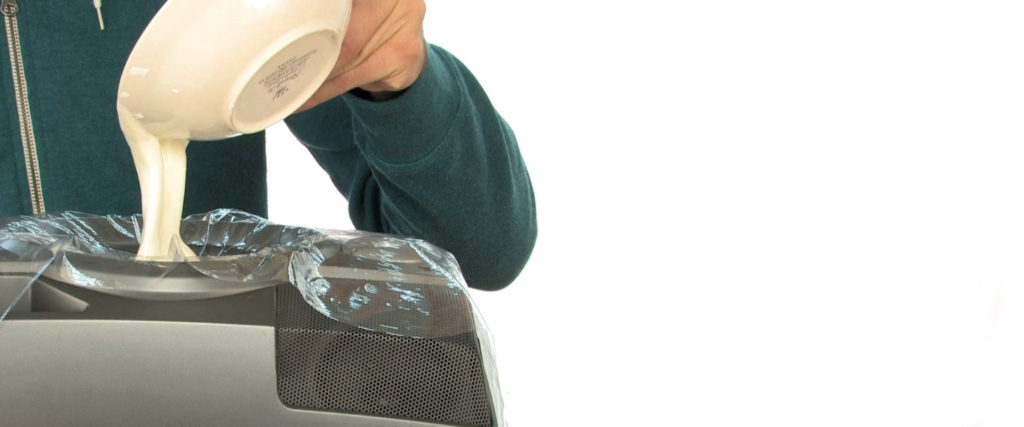
Pour the non-Newtonian liquid onto the plastic on top of the speaker cone.
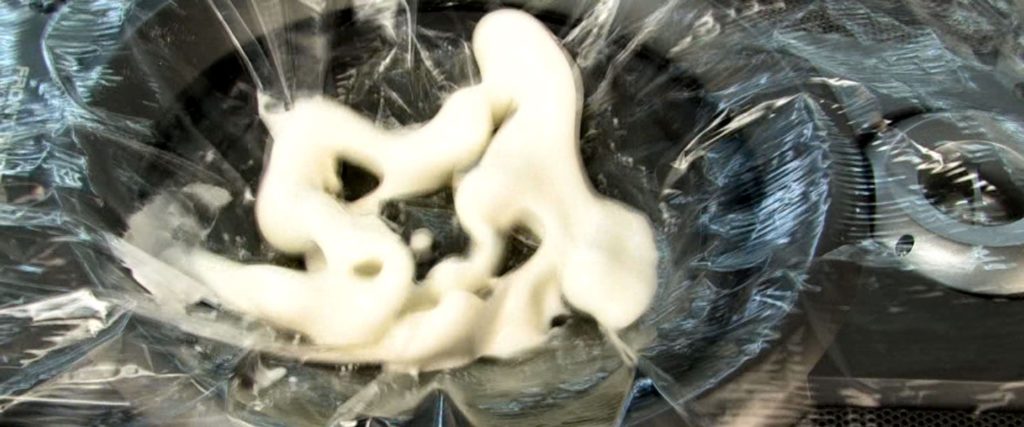
Turn on your sound system and turn up the volume. Pick a track that has a low, consistent bassline and press play. (You can also download the audio track that we use.) Watch the non-Newtonian fluid come to life!
You probably noticed that lower frequencies (the sounds of an explosion or bass in a song) subjected the oobleck to much more movement. Knowledge about sound waves, however, might lead you to believe that it should be the exact opposite. The higher pitched sounds have a higher frequency (meaning there are more vibrations per second). But more vibrations don’t equal more movement of the non-Newtonian fluid. Instead, it is the lower pitched (lower frequency) sounds that cause the oobleck to shake. Although there are fewer vibrations per second at lower pitches, these frequencies cause more motion in the speaker cones.
For more information on oobleck, the non-Newtonian fluid, check out this experiment: Non-Newtonian Cornstarch Recipe.
Creating dancing oobleck is pretty cool, but it isn’t a science fair project. You can create a science fair project by identifying a variable, or something that changes, in this experiment. Let’s take a look at some of the variable options that might work:
That’s just a couple of ideas, but you aren’t limited to those! Try coming up with different ideas of variables and give them a try. Remember, you can only change one thing at a time. If you are testing different sound pitches, make sure that the other factors are remaining the same!
This experiment was used as an actual science fair project by Jack Spangler (Steve’s son) when he was in 4th grade. The write-up that follows is from his science fair project presentation.
Test #1 – High Frequency 1000 Hz – I lined the speaker with a plastic bag and poured the cornstarch into the cone. I set the tone generator to 1,000 hertz (1 hertz = 1 cycle per second). I kept the volume constant at “5” in each one of my tests. As you can see, the cornstarch did not vibrate at all. The tone sounded very high pitched. I discovered that my hypothesis was wrong, so I needed to conduct some more experiments.
Test #2 – Try 500 Hertz – Changing the frequency will be my variable. I tried 500 Hertz and the results were disappointing. Nothing really happened.
Test #3 – Try 100 Hertz – This was a good test because I saw the cornstarch mixture start to vibrate for the first time. It looks like the low frequency makes the cornstarch and water move the most.
Test #4 – Try 50 Hertz – I set the tone generator to 50 Hertz and turned the volume up to “5” and the cornstarch monsters started to appear (just like I had seen online). I learned that 50 Hertz means that the speaker vibrates back and forth 50 times a second. You can see in the picture how the cornstarch mixture started to move. Lower?
Test #5 – Try 20 Hertz – The experiment using 50 Hertz shook the speaker so much that it tore the plastic and actually started to tear the speaker. My Dad repaired the speaker and I got a new bag. I used the same cornstarch from the last experiment to make sure I kept everything the same. As you can see, 20 Hertz is the best frequency!
After I completed my tests with my Dad, I still didn’t really understand why the lower frequency made the cornstarch move more than the high frequency. To answer the question, I interviewed a professional sound engineer, Mr. Howard Megregor from Engineering Dynamics.
When I visited his laboratory, he set up his own version of my experiment using his very expensive speaker, amplifier and tone generator. When I told him that 20 Hertz worked the best, he dialed in the same frequency and he said that I was correct. Mr. Megregor told me that a “Hertz” is a measure of how many cycles (like a vibration) there are in a second. The high frequency has lots of vibrations, but there is not enough motion in the speaker to vibrate the cornstarch liquid.
Cornstarch Monsters is a great example of a science fair project because it clearly shows the scientific method in action. Jack Spangler chose the frequency of the sound as the only variable to test. He didn’t change the frequency and the type of speaker or the type of sound or the volume. He controlled the variables and even used the same cornstarch mixture for each test so that the tests were fair. He ran a new test each time he changed the frequency and then compared the results. He wasn’t ashamed to say that his hypothesis was incorrect. The best part of the experiment is that Jack still had more questions and followed up on them with an expert. That is some real world learning!
Cornstarch Monsters is definitely a “Science Fair Certified” project. Even if Jack’s subject isn’t of interest to you, this experiment is a great one to look at to show you the thought process and steps involved in a great science fair project.
Observations
This is the first science project where I had to perform this many tests to finally arrive at an answer. My first hypothesis was wrong and this made me create a new test. When that test didn’t work, I made up another test. The data from each test (how much it vibrated) helped me decide what test to run next. I had to be reminded several times not to change anything other than the frequency. Now I’m going to put my discovery on YouTube and explain how I did it so that someone else can recreate my experiment.